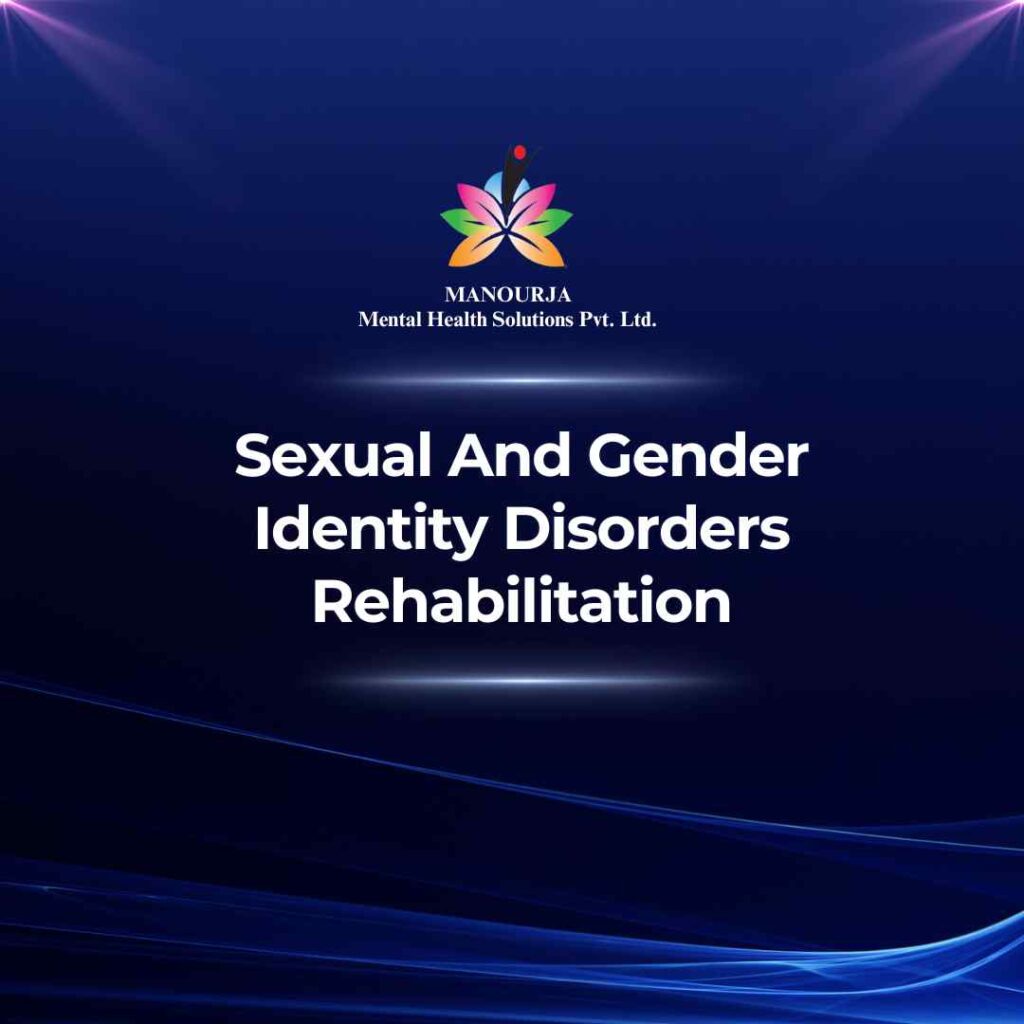Sexual and Gender Identity Disorders Rehabilitation

Sexual and Gender Identity Disorders encompass a range of conditions that can cause significant distress or impairment in personal, family, social, educational, occupational, or other important areas of functioning. These disorders may include gender dysphoria, paraphilias, and sexual dysfunction. Effective recognition and treatment can help individuals manage symptoms and improve their quality of life.
- Gender Dysphoria: Discomfort or distress caused by a discrepancy between a person’s gender identity and sex assigned at birth. Symptoms may include intense discomfort with one’s anatomical sex, a strong desire to be treated as another gender, and a significant disturbance in functioning.
- Paraphilias: Recurrent, intense sexually arousing fantasies, urges, or behaviors involving non-normative targets, situations, or objects which may lead to distress or impairment.
- Sexual Dysfunction: Problems during any phase of the sexual response cycle (desire, arousal, plateau, orgasm, resolution) that prevent the individual or couple from experiencing satisfaction from sexual activity.
Indicators for Outpatient Psychosocial Rehabilitation (OPD)
- Mild to Moderate Distress: Individuals experiencing manageable levels of distress or dysfunction, who can still function in their daily lives.
- Supportive Living Environment: Those who have strong support systems in place, which can facilitate recovery outside of a hospital setting.
- Commitment to Scheduled Treatment: Ability to adhere to treatment schedules, including regular therapy sessions.
Indicators for Inpatient Psychosocial Rehabilitation (IPD)
- Severe Distress or Dysfunction: Where symptoms significantly impair social, occupational, or other important areas of functioning.
- Risk of Harm: Particularly where there may be risks to oneself or others, requiring a more controlled environment.
- Lack of Support: Absence of a stable or supportive home environment which complicates outpatient treatment.
Factors Influencing the Decision
- Severity of Symptoms: More severe symptoms may require intensive, structured treatment.
- Presence of Comorbid Conditions: Such as depression or anxiety, which might complicate treatment and require more intensive care.
- Support System: The presence and quality of a social support system can influence the choice between outpatient and inpatient care.
- Previous Treatment History: Effectiveness of past treatments can inform the level of care needed.
How Psychosocial Rehabilitation Aids in Treatment
Psychosocial rehabilitation for Sexual and Gender Identity Disorders focuses on reducing stigma, addressing associated psychosocial impacts, and improving functional outcomes through therapy and support.
Specific Techniques and Approaches at MANOURJA
- Cognitive Behavioral Therapy (CBT): Helps individuals explore and resolve conflicts between their sexual or gender identity and their behavior or societal expectations.
- Gender-Affirming Therapy: Provides support for gender transition processes when appropriate, including social, hormonal, or surgical transitions.
- Couple’s Therapy: Addresses sexual dysfunction within the context of a relationship, focusing on improving communication and understanding.
- Mindfulness and Stress Reduction Techniques: Used to manage anxiety related to identity or sexual health.
- Group Therapy: Offers a community of support where individuals can share experiences and strategies for coping with similar challenges.
Steps in Psychosocial Rehabilitation at MANOURJA
- Assessment: Comprehensive evaluation to identify specific needs, symptoms, and personal goals.
- Treatment Planning: Development of a personalized treatment plan that addresses individual goals and challenges, integrating appropriate therapeutic interventions.
- Therapeutic Interventions: Implementation of individual and group therapy sessions designed to target specific symptoms and promote healthier coping strategies.
- Regular Monitoring: Ongoing assessment of progress towards goals with adjustments to the treatment plan as needed.
- Community Integration and Support: Facilitation of resources and support systems to ensure continuity of care and support post-treatment.
“Embrace your truth, and each step forward will lead you closer to peace and fulfillment.”
